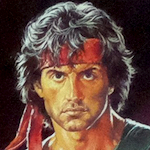 May 22, 1985
May 22, 1985
(yes, 35 years ago today!)
RAMBO: FIRST BLOOD PART II was a phenomenon. And an unlikely one. It’s right there in the title: FIRST BLOOD PART II? How the hell do you do a FIRST BLOOD PART II?
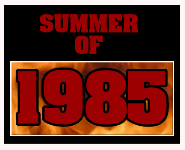 Sure, the makers of FIRST BLOOD famously went with the ending where Rambo didn’t die, as he did in David Morrell’s book. But the character doesn’t exactly lend himself to a rousing second adventure. He wasn’t your typical action movie protagonist, a hero who comes along and saves the day. He was a drifter who was mistreated and fought back hard. Went on a rampage. Single-handedly waged a war against law enforcement (one guy died falling off a helicopter), wrecked a whole town, finally broke down about his experiences in the war and then turned himself in. A great movie because of its simple, character-driven story mechanisms, emotional center and excellent, largely internal and physical (and finally blubbering) performance by Sylvester Stallone.
Sure, the makers of FIRST BLOOD famously went with the ending where Rambo didn’t die, as he did in David Morrell’s book. But the character doesn’t exactly lend himself to a rousing second adventure. He wasn’t your typical action movie protagonist, a hero who comes along and saves the day. He was a drifter who was mistreated and fought back hard. Went on a rampage. Single-handedly waged a war against law enforcement (one guy died falling off a helicopter), wrecked a whole town, finally broke down about his experiences in the war and then turned himself in. A great movie because of its simple, character-driven story mechanisms, emotional center and excellent, largely internal and physical (and finally blubbering) performance by Sylvester Stallone.
So what’s Rambo gonna do, get out of prison, try to go straight, and get hassled by some other sheriff? Nope. They figured we got a perfect killing machine, let’s plug it in. Let him out for a dangerous mission, a one-man DIRTY DOZEN.
To this day I’m amused and kind of impressed by the audacious ludicrousness of the idea. For years I’ve joked about a BICKLE: TAXI DRIVER PART II where Travis Bickle has to use his driving skills and similar psychological profile to stop an assassination attempt. This Rambo guy, he’s traumatized because he was captured and tortured in Vietnam and his buddies all died? No problem! Let’s say there’s still some guys locked up and he can go back and save them. The war’s not over yet! He can still win it! Happy ending!
THE MOVIE
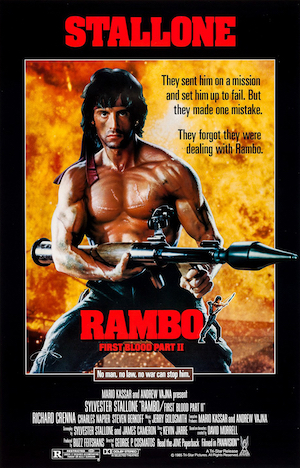 That makes for a great opening. It starts with an explosion. As the camera moves down we see that it’s not a battle – it’s a rock quarry, where Rambo is hammering away. Prison labor. Then the guards come get him, because his mentor/father figure Trautman is there to recruit him for this mission.
That makes for a great opening. It starts with an explosion. As the camera moves down we see that it’s not a battle – it’s a rock quarry, where Rambo is hammering away. Prison labor. Then the guards come get him, because his mentor/father figure Trautman is there to recruit him for this mission.
In earlier scripts Rambo has some smartass lines that could’ve worked, but Stallone inhabits the character so thoroughly he knows a better way. “How are ya, Johnny?” Trautman asks and when Stallone grunts, “Good” it doesn’t come off as sarcasm. I like the idea that Rambo kind of likes it in there, because “At least in here I know where I stand.” He agrees to the mission when he realizes he could save P.O.W.s from camps like the one he was in, but he agrees with a slight nod.
Though Stallone’s body is completely chiseled and the movie helped usher in the age of shirtless bodybuilder movie stars, he looks absolutely lithe compared to the tree trunk physique he gave the character for later films. Compare Stallone’s largely non-verbal performance, his heavy eyelids, lack of eye contact, and his cobra-like movements in battle, to jibber-jabbering, lovable goof Rocky Balboa. It’s entirely different. I don’t think he ever got enough credit for that. (True to form, The Stupid Fucking Razzies gave Stallone worst actor, picture, screenplay and original song for this.)
Rambo reports to intelligence officer Major Marshall Roger T. Murdock (Charles Napier, MANIAC COP 2), who assures him he was in ‘Nam himself and understands how the vets feel, though the details he offers convince Rambo that he’s full of shit. Lee Marvin turned down the role of Murdock, as he had the role of Trautman in FIRST BLOOD. I like that Napier has more of a resemblance to Brian Dennehy. Similar kind of blowhard, but this time they’re supposed to be on the same team.
The mercenary who welcomes Rambo to the base and goes with him for the drop off is Ericson, played by Martin Kove (STEELE JUSTICE) between KARATE KID 1 and 2. So it’s a reunion of Nero the Hero and Machine Gun Joe Viterbo from DEATH RACE 2000. I think the movie asks us to view him with suspicion from the beginning, and consider it a comeuppance when Rambo smashes him with his gun at the end. But Kove gives him some layers, making him seem torn between following orders and loyalty to Rambo and the P.O.W.s, even though he makes the wrong choice.
Though Rambo’s parachute gets stuck on the way out and he’s nearly killed, he somehow lands right where he needs to to meet up with his guide and future momentary-love intelligence agent Co Phuong Bao (Julia Nickson, DOUBLE DRAGON). Nickson is pretty cool in the part, as flimsy as it is. I understand the need to make Rambo a one man operation, but as long as she’s there, they could have her do more.
Rambo discovers that there actually are still P.O.W.s ten years after the war, not even particularly hidden, and right exactly where they were supposed to be. But due to Those Damn Bureaucrats and Their Red Tape he’s supposed to just take pictures and let another team do the rescue. This is visualized in a pretty cool montage that intercuts the loading of guns with the loading of film into the camera. I’d argue that it actually wouldn’t be an unreasonable plan if they had a specific team ready to go, but it’s understandably frustrating for Rambo.
He tries to save one prisoner who’s in imminent danger (Don Collins, musical director of Boyz II Men Motown: A Journey Through Hitsville USA Live [2008]), and when the extraction team reports that to Murdock (“That’s Rambo! Christ, he’s found one!”) he flips out and cancels the pickup. This is a very loaded emotional moment, this character who was literally left behind, and then figuratively left behind, has gone back, only to be literally left behind again, standing there looking into the eyes of the guys doing the leaving.
Of course in the ‘80s our fear of communism was concentrated on the Soviet Union, so the Vietnamese captors seem to be working for Soviet Lieutenant Colonel Podovsky (Steven Berkoff, an accomplished playwright who was the bad guy in OCTOPUSSY and BEVERLY HILLS COP but more importantly was in BARRY LYNDON and UNDER THE CHERRY MOON). We cut to Rambo shackled shoulder-deep in leech-infested mud water. They torture him, but I’m unclear what information they think they need out of him – they already know that he’s been disavowed and abandoned, which they taunt him about.
Rambo’s escape from the torture is a cool Oh Shit It’s On moment, though it feels a little bit off to me. The Soviets get him to talk over the radio to Murdock. They want him to tell him “the mission was a failure and all missions will fail.” Murdock wants him to tell him where he is. Instead he says “Murdock – I’m comin’ to get you!” and then escapes.
Maybe I’m a dummy, but I had to kind of study this scene to understand okay, I guess he could only escape at that moment because he used the microphone as a weapon. To me it plays kind of like he could’ve escaped at any time, like he’s Blade or something. I also missed that Co fires a machine gun at them from under the floorboards – a relief, because it always played to me like she snuck in there just to be standing at the door when he escapes on his own.
But this leads to the most laughable part of the movie, when within about a minute Rambo agrees to bring Co to America, they kiss, and she gets shot to death. A DEATH WISH 3 moment. I read that there was originally a shot where he yelled “NO!” and it echoed throughout the jungle, but they cut it because it made test audiences laugh. So I guess give them credit for pulling it back a little.
Co’s death is just a turbo boost button for Rambo to go into action. We get the classic shot from behind of him tying his headband, then from the front as he ties on her Buddha necklace. Soon he’s a pair of eyeballs in mud coming out to stab everybody (the FIRST BLOOD portion of the action).
It’s not absent of grace notes. I like that when the prisoner tells him he’s been locked up for a year and then hears that it’s 1985, the look on his face is allowed to say it all. But more than anything, this movie is remembered as a balls out Val Verde style action movie, with lots of the bullshit that makes the genre fun. Napier does great with the Just How Badass Is He scene, putting on reading glasses and summarizing Rambo’s file like he’s still familiarizing himself with it. And you gotta appreciate the goofy lines like when Trautman tells him, “You’re the one that’s making the mistake.”
“Yeah? What mistake?”
“Rambo.”
We enjoy the over-the-top-ness of Rambo firing arrows that cause many gigantic explosions of vehicles, bridges and buildings. I always thought the arrow tips he screws on were explosives, but maybe they’re supposed to be igniting gas tanks? There’s a part where Rambo finds a gas can that he uses, but it’s weird because there’s a clucking chicken in the middle of the frame. It really seems like the chicken is what you’re supposed to register in the shot!
You think the exploding arrows are gonna be the climax, and then there’s the part where the Soviet helicopter flies too close to the water (what were they gonna do, check his pulse?) so he jumps in and commandeers the vehicle to fly over the camp firing the minigun at every individual bad guy in the camp and drop bombs causing, by my count, around 30 explosions. (Good thing they didn’t use that stuff on him.)
That might be the climax, but as Rambo escapes with the prisoners we get another, more intimate sequence involving a helicopter duel, and then he still needs some release so he comes back to the base, storms into the command center with his machine gun – nice “okay he’s lost it and is a straight up murderer now” fakeout – and destroys all the equipment around Murdock. I would appreciate if he also went up and honked his nose like Mr. Miyagi in part 2.
Stallone understood the importance of FIRST BLOOD’s emotional speech. He tells Trautman that all he wants is “For our country to love us as much as we love it.” When Stallone did an Ain’t It Cool News Q&A back in 2006, he described the film’s politics as, “a right-wing stance coming from Trautman and his nemesis, Murdock, contrasted by Rambo’s obvious neutrality, which I believe is explained in Rambo’s final speech.”
Nevertheless, the movie was received by many fans and detractors alike as a celebration of American military might, and a chance for us to puff our chests out and not be ashamed of the Vietnam War, as if losing was the only thing wrong with it. They latched onto the “Do we get to win this time?” line. Again, those bureaucrats, if they would’ve just let us keep killing for a while longer, we would’ve been redeemed. It’s on them.
On the other hand, even “right wing” Trautman refers to “the whole damn war” as a lie, and admits to Rambo, “The war, everything that happened here may be wrong.” Maybe the secret of the movie was not tapping into any particular sentiment from the time, but getting you to fill in your own.
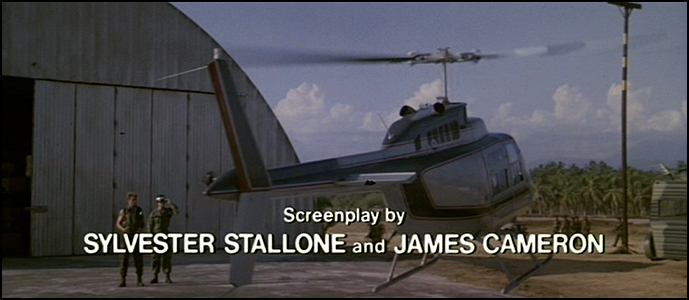
THE SCRIPT
The premise of Rambo’s return to Vietnam didn’t come out of thin air. The idea that there were still live prisoners being held after the war, their existence covered up by the U.S. government, was a real belief among some families of M.I.A.s. “I always felt that they did exist,” says Stallone on the DVD extras. And there were in fact private citizens and groups that publicized missions to go try to rescue them, though all were unsuccessful and/or scams.
Chuck Norris had already used the same premise in MISSING IN ACTION. Supposedly the RAMBO screenplay was making the rounds in Hollywood, inspiring Cannon to take the premise and rush into production. But that story seems to ignore the existence of UNCOMMON VALOR, which starred Gene Hackman, Fred Ward, Reb Brown and Patrick Swayze in a similar story, from FIRST BLOOD director Ted Kotcheff and Rambo series producer Buzz Feitshans. There were many filmmakers circling this topic.
A few months before UNCOMMON VALOR was released, during a time when James Cameron was waiting to film THE TERMINATOR and needed a paycheck, he suddenly got two writing gigs on the same morning: the sequels to FIRST BLOOD and ALIEN. He had three months to finish them, so he set up one desk in his bedroom and one in his living room to keep his notes (and presumably mindsets) separate. He had one lunch to discuss RAMBO with Stallone, who supposedly told him, “Put a girl in it.”
So he wrote it, turned it in and that was the end of the job. He shot THE TERMINATOR and became James Fucking Cameron while Stallone reworked the script into what he wanted.
In 1992, Cameron told On Production Magazine
“The second film, the one I wrote, was by its nature a little more violent because Rambo was going into enemy territory, but I tried to walk the same line. He didn’t go out of his way to slaughter people just because they were wearing the wrong uniform. A lot of moral distinctions I tried to build into the script got carved away during the shoot. I didn’t want to attach myself to that film in a strong way because the end result didn’t represent what I wrote.”
Indeed, the movie ditches Cameron’s scene where a young Vietnamese conscript closes his eyes and clings to a Buddhist prayer medallion, only to find that Rambo has left him alive. It does not share Cameron’s fascination with a Buddha statue, which at one point is engulfed in flames to resemble a self-immolating monk.
A few of his ideas made it into his own movies. His script opened with Rambo in “an isolation cell that hasn’t been used since the Spanish Inquisition” in the “Chronic Ward” of the “Neuropsychiatric Wing” of the V.A. in Fayetteville, North Carolina. Makes sense, but I’m so glad Stallone changed it to the rock quarry. Not only is that a cool opening, but Cameron might not have had his reintroduction of Sarah Connor in TERMINATOR 2: JUDGMENT DAY.
To set up Rambo’s piloting of the Huey during the finale, Cameron had a pre-mission scene where he impresses Murdock by flying one. “I didn’t know you were a stick man!” Cameron used basically the same trick to perfection with Ripley using the powerloader in ALIENS.
And I do believe he used this image:
UNDERWATER SEQUENCE Rambo dives to the bottom as a sun-bright CANOPY OF FIRE rushes across the surface with a muffled ROAR.
in TRUE LIES.
Kevin Jarre (GLORY, NAVY SEALS, TOMBSTONE, JUDGMENT NIGHT) gets a “story by” credit. I haven’t been able to find any confirmation if he wrote a treatment, or Cameron rewrote a draft by him, or what. But whoever’s responsible for the basic story in Cameron’s draft, it stayed pretty much intact for Stallone’s. Trautman gets Rambo out of lockup to do a mission to parachute into Vietnam, meet with Co and take pictures of alleged P.O.W.s, but he tries to rescue one, so they abandon him there, and it turns out the mission was meant only to placate. Cameron had the Russian interrogators, and wrote most of their dialogue that’s in the movie. He had Co’s attempt to rescue Rambo from torture on an electrified bed frame as they read him a transcript of the pilots abandoning him. His Rambo goes to a village and steals a gas can that, yes, is near chickens (though he leaves them with their throats slit, “A bizarre little shrine.”) Rambo has a (much longer) talk with Co about going to America together (and getting married!), she dies in his arms (though after getting to be involved in some action, and after he gets some emotional dialogue, including telling her his first name). He steals the helicopter (using “a sweeping SHAO-LIN CHUN ROUNDHOUSE”). He doesn’t shoot up the mission control center at the end, but he does go in and pull the trigger of an empty gun on the Murdock character Kirkhill’s head.
Stallone changed numerous details and dialogue, in some cases for the better. Cameron teamed Rambo with a partner named Brewer, introduced in a loud Hawaiian shirt, being obnoxious with a Thai prostitute. I like to think Cameron was picturing Bill Paxton, but producers eyed John Travolta. The character added a little comic relief, which we didn’t really need, and not much else. It was wise to cut him.
Cameron gave the first prisoner they find a name (De Fravio) and a personality. When they find him he’s being punished for putting a cobra in the guard barracks. I like that he’s more of a character than the movie’s equivalent “P.O.W. #1”, but I can see that he’s a little too jokey for the situation.
Crucially, Stallone added the bow and arrow. Cameron had him blowing everything up with a rocket launcher.
Stallone removed some good end-of-FIRST-BLOOD type comments from the beginning (“In ’Nam I flew gunships. Million dollar equipment. Back here nobody trusts me to park cars”) and added the conversation with Trautman at the end. Maybe most significantly for the reception of the movie, he added the famous “Do we get to win this time?” line. Though Cameron’s draft used the live prisoners theory it didn’t push the “second chance to win the Vietnam War” button so hard.
THE BOOK
 Many aspects of Cameron’s script lived on in the form of the authorized novelization, which was written by none other than First Blood author David Morrell, and spent six weeks on the New York Times bestseller list. Though movie tie-in novels often differ from movies due to being written before production is complete, Morrell did this deliberately. In an interview on his official websight, he explains that they were forced to offer it to him and let him do it his way because his contract stipulated no one else could write books about the character. He felt the shooting script was “not much to work with” but that he “struck gold” when he read Cameron’s draft. He estimates that he used “one-third original material from me, one third adaptation of James Cameron, and one third the final script.”
Many aspects of Cameron’s script lived on in the form of the authorized novelization, which was written by none other than First Blood author David Morrell, and spent six weeks on the New York Times bestseller list. Though movie tie-in novels often differ from movies due to being written before production is complete, Morrell did this deliberately. In an interview on his official websight, he explains that they were forced to offer it to him and let him do it his way because his contract stipulated no one else could write books about the character. He felt the shooting script was “not much to work with” but that he “struck gold” when he read Cameron’s draft. He estimates that he used “one-third original material from me, one third adaptation of James Cameron, and one third the final script.”
Rather than saying Rambo ate a certain Kentuckian root to slow his heart rate and was secretly dug up from Arlington by Trautman, Morrell starts with an author’s note simply saying, “In my novel First Blood, Rambo died. In the films, he lives.” He also gives Trautman his rank from the movie (Colonel) instead of the book (Captain), but doesn’t entirely surrender to movie continuity: novelized-Rambo is reminded of his experience in the cave, where he encountered not rats (like the movie) but bats (like the book).
The book uses alot of Cameron’s abandoned dialogue, including pre-mission setup where Murdocks offers him state-of-the-art equipment and is flabbergasted that he turns it down. (Morrell has him take the bow and arrow.) Rambo wants to use an AK just like his enemies so the sounds of his shots aren’t distinguishable.
Rambo has more lines in the book, some of them hard to picture Stallone saying. Near the end he tells the rescued P.O.W.s about STAR WARS and that the actor Ronald Reagan is president. Both seem out-of-character for Rambo. Cameron wrote the STAR WARS lines for Brewer.
Morrell also uses one of Cameron’s more vicious twists where Murdock actually orders the mercenaries to kill Rambo and the P.O.W.s and destroy all evidence of their existence. Pretty cynical. But he also sticks with Cameron’s happy ending where one of the prisoners tells Rambo he did a good job, which Rambo earlier said was all he wanted for his service in Vietnam. So our boy finally gets some satisfaction. (The script ends with Rambo giving a thumbs up, the book gives that to the prisoner.)
Of course, the most interesting stuff is that third that’s all Morrell. He adds a mischievousness to Rambo by having him fly in to Bangkok, intentionally lose his tails as if he’s trying to escape, then just show up at the base as expected and play dumb. Fucking with him.
From the novelization we learn that Rambo practices Zen meditation while in prison. In fact, in the first sentence Rambo is “immersed in the purity of a perfect timeless Zen moment” while hammering rocks. He considers himself a Zen Buddhist, having learned it from “a mountain tribesman with whom he’d worked on his first in-country mission.” Zen taught him not to fear, because life was “but an illusion. A veil. A magical trick that the Holy One played on us.”
Morrell tells us that Rambo’s father was an Italian Catholic, that his mother was Navajo. He’d participated in both their religions in and around Bowie, Arizona. In 2005 a bizarre press release touting a version of RAMBO 4 that never came to be mentioned “the return to Rambo’s Navajo roots” and Rambo’s family being terrorized by white supremacists. This was a surprise to many, having forgotten Murdock’s differing description of Rambo’s heritage (“Indian-German descent – hell of a combination”), but it might not have been a shock if we’d all read this novelization.
We also learn that he was drafted but applied himself so well he was accepted into Special Forces. And that Joseph Heller’s Catch-22 was “a book that he’d admired in his innocence.”
Stallone abbreviated what Cameron did with Co, but Morrell expands on it. Co only asks him to marry her so she can get a green card, and at first he doesn’t want to do it. He ultimately says yes, but has to abandon her for safety purposes, causing her to feel betrayed. But they have growing feelings for each other. When she’s killed in the movie the melodrama feels out of place. In the book there’s more setup, and more payoff: he’s so affected by her death that he risks his life to stick around and dig her a grave – first using his knife, then his bare hands. He not only takes her Buddha necklace as a souvenir, but cuts off a strip of her dress and wears it as the headband. And he’s thinking about her in the last lines of the book.
While the sequel movie matches the First Blood book’s level of violence (reportedly the body count is 85), Morrell carefully avoids turning the novelization into a blow-by-blow of the action scenes in the movie. Instead of taking the time to describe some of the scenes in detail he cleverly has characters screaming over the radio about what’s going on and what Rambo has just done. So you still know about all the shit he’s blown up, who he’s killed and how, but hearing it from this perspective he’s more of an unseen force like a ninja, an Alien, Jaws, or the Glimmer Man.
Morrell gives more explanation to the exploding arrows. Rambo rolls C4 into a worm shape, slides it into the hollow shafts of the arrows and uses detonator arrow heads (not sure where you get those). So it’s not just a bomb on the tip of an arrow. There’s also a detailed explanation of how he recovers his arrows to re-use them, to explain how he doesn’t run out. (And even so he’s not able to have as many as he wants.)
Morrell dedicates the book
To Stirling Silliphant,
for October 7, 1960, and the first episode of “Route 66,”
for teaching me to love a story
To Tiana Alexandra-Silliphant,
who lived there and survived
Two years later the latter would star in CATCH THE HEAT, from the director of RAPPIN’. Anyway, there’s your two degrees of separation between Rambo and Bruce Lee.
THE PRODUCTION
RAMBO: FIRST BLOOD PART II was directed by George P. Cosmatos, his second North American movie after OF UNKNOWN ORIGIN (1983), which had caught the eye of Stallone’s horror-fan son Sage. The crazy thing about that is that Sage was 9 years old when RAMBO was released! What the fuck? But the story has been confirmed by Cosmatos’ also-great-director son Panos:
https://twitter.com/panoscosmatos/status/224004710003253248
There’s a weird bit of controversy here. RAMBO: FIRST BLOOD PART II credited-story-writer Kevin Jarre later wrote TOMBSTONE and was slated to direct it. A month into shooting he was behind schedule and producer Andrew Vajna thought his footage wasn’t working so he fired him and replaced him with Cosmatos, who came on with only three days to prepare.
By all accounts, Kurt Russell put extra work into that movie, involving himself in rewrites, for example. But in a 2006 interview with True West Magazine the actor claimed
“We brought in a guy to be a ghost director. They wanted me to take over the movie. I said, ‘I’ll do it, but I don’t want to put my name on it. I don’t want to be the guy… I got him from Sly Stallone—called up Sly, said I need a guy. Sly did the same thing with RAMBO 2 with George. And I said to George, ‘While you’re alive George, I won’t say a goddamn thing.’”
He said, “I was doing it all on the sly. George and I had sign language going on.” But he also lamented, “I didn’t get a chance to edit the movie…”
Hmm. I wonder who did? That ghost director?
Obviously we all agree Kurt Russell is the man, and people love to believe these kinds of scandalous behind the scenes “actually…” legends. But I strongly suspect what Russell did was secretly produce TOMBSTONE, not direct it. An Entertainment Weekly article from before the movie came out talks about Russell’s hands-on role, but also gives plenty of evidence of Cosmatos directing, including TWILIGHT director Catherine Hardwicke (who was the production designer), saying she stayed on “because she felt Cosmatos improves the visuals.” She also mentions that “He was demanding,” upsetting the director of photography and others. What, was Kurt giving him hand signals for that?
When Russell came to Vajna and said, “I got the perfect guy, a friend recommended him,” did Vajna say, “Oh shit, that’s crazy that you would say that, because I actually know this guy, he directed the smash hit movie I’m most famous for producing, which was also written by Kevin.” And then did he say, “Hey Buzz! Buzz, c’mere!,” calling over Buzz Feitshans, who also produced both RAMBO and TOMBSTONE. “Kurt says get George Cosmatos. Remember? The guy we did RAMBO II with!”
Regardless of whether or not that could’ve happened, Stallone had already directed PARADISE ALLEY, ROCKY II, ROCKY III and STAYING ALIVE before this. He was not shy about taking over as director on an established series. Why would he have had to pretend direct? I don’t buy it, Kurt. Not cool to start that myth.
Cosmatos had some great craftsmen working with him, including legendary AFRICAN QUEEN director of photography Jack Cardiff, which was serendipitous. Another d.p. had to be replaced at the last minute for health reasons, and lead villain actor Berkoff happened to hear from a friend that Cardiff was vacationing nearby in Mexico, recuperating after shooting CAT’S EYE. They were able to offer Cardiff enough money to convince him to do it. It was one of his last features.
The editors include some all-time greats of action movie cutting: Mark Goldblatt (ENTER THE NINJA, HALLOWEEN II, THE TERMINATOR, later PREDATOR 2) and Mark Helfrich (REVENGE OF THE NINJA, later PREDATOR). Production designer Bill Kenney had been the art director of DIAMONDS ARE FOREVER and CARRIE, and production designer of BODY HEAT. He’d continue to work with Stallone on ROCKY IV, COBRA, RAMBO III, LOCK UP and OSCAR, as well as doing UNDER SIEGE. Stunt coordinator Richard “Diamond” Farnsworth, who would go on to do THE DEAD POOL and PINK CADILLAC.
THE RELEASE
RAMBO: FIRST BLOOD PART II was the first movie released on more than 2,000 screens. It made $20 million on its first weekend and went on to make $300 million worldwide, breaking various box office records. Danny, who lived up the street from me, reported that a guy yelled “RAMBOOOOOO!” at the beginning and everybody cheered and it was awesome.
Though critics generally had a sense of humor about the movie’s politics and brutality, many sneered at Stallone himself. Vincent Canby in The New York Times wrote that “Rambo, as personified by Mr. Stallone, isn’t a man who needs the love of others. He loves himself quite enough.” This conflation of the damaged character of Rambo with a perception of Stallone as an egomaniac shows how little consideration many gave his movies at the time.
Stanley Kauffman in The New Republic was more respectful: “RAMBO is cinematically no piece of schlock; it was made with prime professional skills. (Cinematography by Jack Cardiff, an Oscar winner.) In credibility, the action is as ludicrous as old Saturday-afternoon serials; in execution, the skills help it to skate over the incredibilities.”
(Then he says some weird stuff about Rambo’s “half-Indian, half-German stock”)
Siskel and Ebert had a good attitude about it, laughing at various aspects but seeming pretty delighted, and Ebert called Rambo a “very appealing” character.
https://youtu.be/5lF0nqJau0k
In retrospect it was kind of a nice gesture to retitle the series. FIRST BLOOD is a separate entity that I hold high above any of its sequels. But this figuratively cartoon Rambo that soon became a literal cartoon Rambo – I get some kind of kick out of this guy too. I don’t consider this one of the greats, but there’s undeniably something special about it, something that could only really rise out of the mud in the Summer of 1985.
SUMMER OF 1985 NOTES
Cultural references:
I don’t think there are any pop culture references in the movie, but Cameron’s draft had a few. Co tells Rambo she plans to go to the U.S. to see her son, “Maybe teach economics. Buy Cadillac. Watch Dynasty.” (Note that in GOTCHA! he meets German punkers whose idea of America is watching Dallas.)
During the helicopter escape Brewer says, “Hell. This is just like fucking STAR WARS, man!” When he realizes P.O.W. De Fravio doesn’t know what that is, he says, “You’re gonna love it.” Later, we hear him trying to explain Darth Vader.
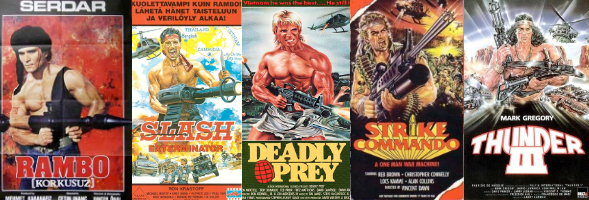 Cultural impact:
Cultural impact:
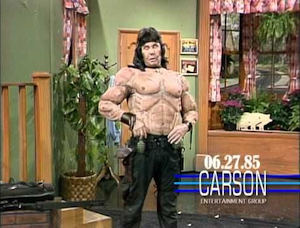 RAMBO: FIRST BLOOD PART II was 1985’s #2 highest grossing movie, and highest R-rated one. I think it’s likely the most imitated action movie of the ‘80s, even just in the area of poster art – the specific shirtless-with-rocket-launcher pose made its way into many an awkwardly painted b-movie cover. Rambo became a ubiquitous pop culture reference, mentioned by Reagan, parodied by Johnny Carson in a skit, Weird Al in UHF, Gizmo in GREMLINS 2, Charlie Sheen in HOT SHOTS! PART DEUX, etc.
RAMBO: FIRST BLOOD PART II was 1985’s #2 highest grossing movie, and highest R-rated one. I think it’s likely the most imitated action movie of the ‘80s, even just in the area of poster art – the specific shirtless-with-rocket-launcher pose made its way into many an awkwardly painted b-movie cover. Rambo became a ubiquitous pop culture reference, mentioned by Reagan, parodied by Johnny Carson in a skit, Weird Al in UHF, Gizmo in GREMLINS 2, Charlie Sheen in HOT SHOTS! PART DEUX, etc.

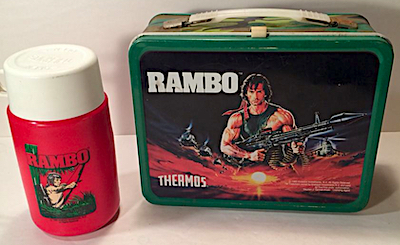
Tie-ins:
There was plenty of merchandise, unusual for a violent R-rated movie at that time. This includes trading cards and lunch boxes (both a red plastic one and a metal one with camouflage sides, plus two Thermos designs – one a logo, one with a drawing of Rambo and his bow).
And I like this birthday party centerpiece somebody posted on ebay:
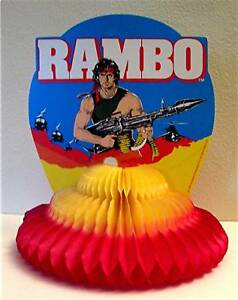
There were different tie-in video games released for Commodore 64, Nintendo Entertainment System and Sega Master System. A great thing about the Nintendo version is that Trautman asks, “Your mission is to sneak into the enemy camp and find them. Are you up to it?” and you have the option to choose “I feel better in prison,” but can’t actually continue the game until you click “I’m not afraid of death.” One thing that sounds pretty different from the movie is that he fights giant spiders. Also, at the end Rambo throws the kanji for “anger” at Murdock and he turns into a frog. Which was not even in the Cameron draft.
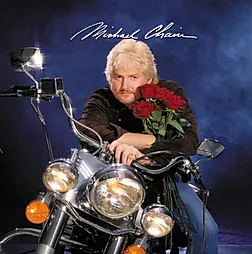 By April of the next year the Rambo: The Force of Freedom cartoon was on the air, developed by story editor/head writer Michael Chain, a singer-songwriter, “improv comedy master,” Transformers voice actor and writer of She-Ra: Princess of Power and the Punky Brewster cartoon. (He later did an episode of Police Academy: The Animated Series.) I trust I don’t need to explain why it’s funny that this particular movie was adapted to a children’s cartoon and toy line.
By April of the next year the Rambo: The Force of Freedom cartoon was on the air, developed by story editor/head writer Michael Chain, a singer-songwriter, “improv comedy master,” Transformers voice actor and writer of She-Ra: Princess of Power and the Punky Brewster cartoon. (He later did an episode of Police Academy: The Animated Series.) I trust I don’t need to explain why it’s funny that this particular movie was adapted to a children’s cartoon and toy line.
(I used to joke about a TOXIC AVENGER cartoon, and then that happened too.)
Most importantly, the movie inspired some topnotch dance tunes, which I will leave you with. Happy 35th RAMBO: FIRST BLOOD PART II anniversary everybody, and thanks for skimming.
sources/additional reading:


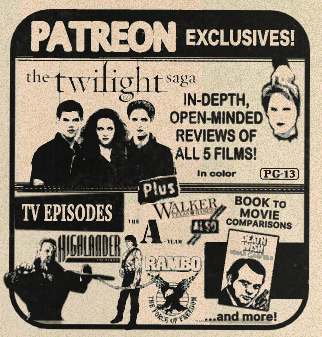
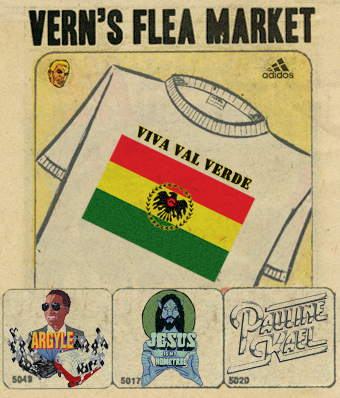
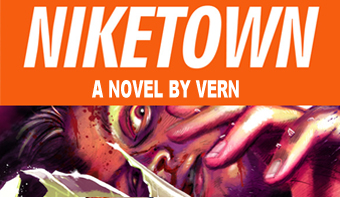
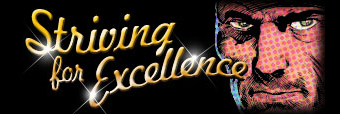
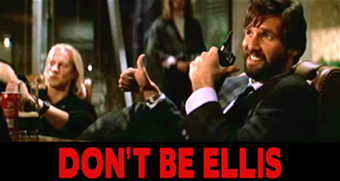

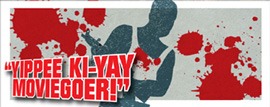








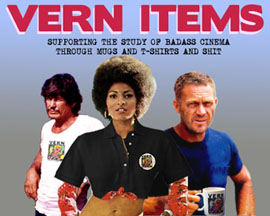
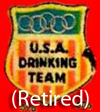
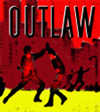






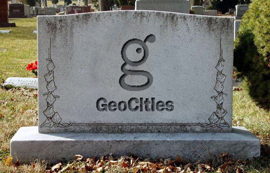
May 22nd, 2020 at 3:39 pm
Rambo’s headband is really weird because in the first movie he only has it because he gets winged in the head and ties something around it to stop the bleeding. It’s just meant to be functional, but then in real life the look became iconic, I guess, so in the sequels he wears it for fashion purposes. It sort of sums up the difference in tone between the original and the rest.